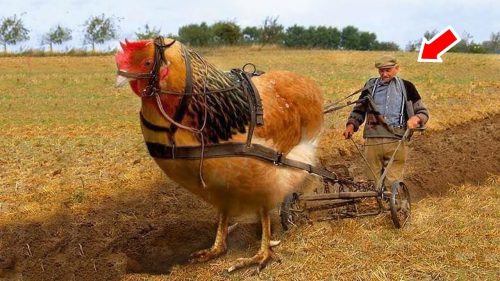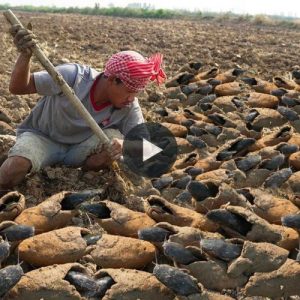In a peculiar and unusual tale, a farmer has captured the attention of many as he employs a mutant chicken to plow his fields.
This strange creature, the result of genetic modification, boasts six legs and displays incredible strength, leaving onlookers perplexed.
While some find fascination in this genetically altered bird, others question the ethics of using such animals for agricultural purposes.
In this article, we will delve into the peculiar story of the mutant chicken and explore the broader context of genetic modification in agriculture.
- The Discovery of the Mutant Chicken:
During routine farming activities, the farmer stumbled upon the mutant chicken in his coop. Its larger size, six legs, and unusual gait set it apart from the other chickens.
Intrigued by its remarkable strength, the farmer decided to investigate further and soon discovered that the bird was the product of a genetic modification experiment gone awry.

Despite its strange appearance, the farmer saw potential in harnessing the chicken’s strength to aid in his farming tasks.
- Putting the Mutant Chicken to Work:
Opting to capitalize on the unique abilities of the mutant chicken, the farmer attached a plow to its body and set it loose on his fields.
The sight of the unusual creature plowing the land has captured the attention of the local community and beyond, drawing both awe and concern.
- The Ethical Dilemma:
The use of genetically modified animals in farming raises ethical questions among some observers. Concerns arise about the potential consequences of meddling with nature and the long-term effects of genetic modifications.
Critics argue that altering an animal’s genetic makeup for human gain may have unintended repercussions on ecosystems and animal welfare.
However, proponents contend that such modifications can lead to enhanced agricultural productivity and sustainability.
- Genetic Modification in Agriculture:
While the idea of using mutant chickens for farming may be extraordinary, the practice of genetic modification in agriculture is not entirely novel.
In recent years, scientists have explored genetic modification to develop crops that exhibit heightened resistance to pests and diseases.
Additionally, they aim to create crops capable of thriving in adverse environmental conditions, ultimately contributing to global food security.
- Balancing Progress and Responsibility:
The story of the mutant chicken highlights the delicate balance between technological progress and the ethical responsibilities that come with genetic modification.
As science continues to advance, society must weigh the potential benefits against the possible risks.
Regulatory frameworks and ethical guidelines must evolve in tandem with scientific advancements to ensure responsible and sustainable use of genetic modification in agriculture and beyond.
The farmer’s use of a mutant chicken to plow his fields has presented a bizarre yet thought-provoking scenario.
The story serves as a reminder of the constant interplay between human innovation and the ethical implications of tampering with nature.
As the world grapples with the possibilities and challenges of genetic modification, it is essential to navigate these uncharted waters responsibly, with a keen awareness of the impact on both our environment and society at large.






